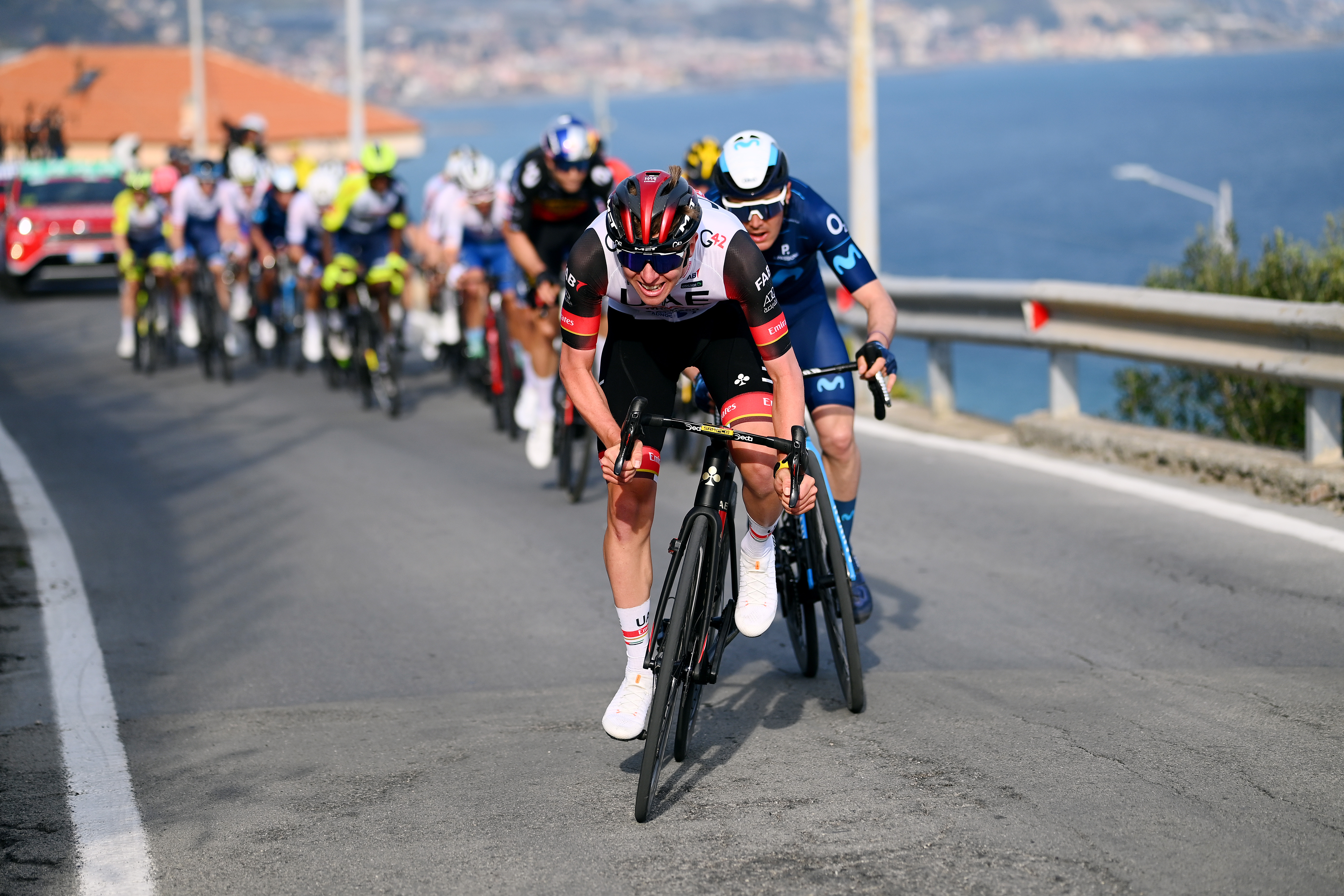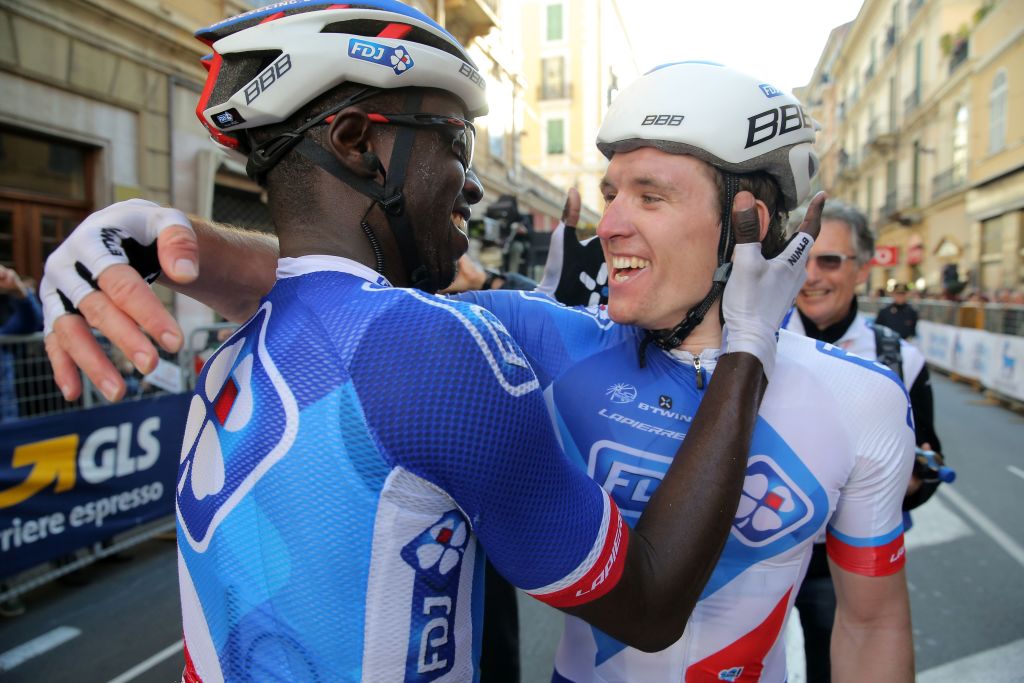'A race of infinite possibilities' – But is Milan-San Remo now beyond the sprinters?
Pogacar and Van Aert leave the fast men struggling in the era of attacking racing

“Everything must change for everything to remain the same” is one of the most famous quotations in Italian literature. The paradoxical statement comes from a novel, Giuseppe Tomasi di Lampedusa's The Leopard, with 19th-century Sicilian society as its subject matter, but it is a good description of 21st-century bike racing too.
Each edition of Milan-San Remo has a seemingly endless number of potential outcomes but the ingredients that go into producing them remain virtually identical. Professional bike racing is constantly changing but the outcome of the races is the same.
No matter the protagonists in any given year, we take it for granted that each edition of La Primavera will be run over an almost absurdly long distance between the capital of northern Italy and the coastal resort of San Remo.
And it’s equally hard to imagine anything other than the race’s symbolic switch from winter to spring as it crosses the Passo Turchino, followed by the series of short, coastal 'capi' climbs before the Cipressa and the Poggio and then the usual climactic switchback descent to San Remo’s Via Roma finish.
It’s symptomatic of Milan-San Remo’s ferocious attachment to its own past that its unprecedented start this year in Abbiategrasso, a town a few dozen kilometres further west of Milan, has sparked so much comment.
Speculation on the potential for change to the outcome was even more intense, of course, when the route of the 2020 edition was changed considerably because of its pandemic-induced shift in dates to the summer.
That’s equally true on the rare occasions when the Turchino has been substituted because of landslides, or when building work in San Remo meant the Via Roma finish was moved elsewhere. By comparison, Il Lombardia, Italy’s other Monument, constantly (and deliberately) changes its start and finish towns each year and mixes the route up again and again, and nobody bats an eyelid.
The latest race content, interviews, features, reviews and expert buying guides, direct to your inbox!
Yet for all that familiarity of format, Milan-San Remo is always cited as the least formulaic of the Classics, the hardest to read and so to win, and the one with the least certain outcome.
“The thing that always strikes me about Milan-San Remo is that it is never over, it’s the race of infinite possibilities,” Elia Viviani tells Cyclingnews.
“It’s the race that’s always open to change, in that way it’s like a dream. It’s the first big Classic of the season, too. And the first is always the most important of all.”

No race for fast men?
Yet for all that, Milan-San Remo somehow retains its central paradox of constantly changing to stay the same. The change in the last decade is the trend away from bunch sprint finishes, with the attacks on the Poggio now appearing to have the upper hand.
And with Tadej Pogačar primed to make another volley of attacks on the Poggio on Saturday, Milan-San Remo feels increasingly beyond the reach of the pure fast men.
The last time an out-and-out sprinter raised his arms in victory was Arnaud Démare in 2016. Yet Milan-San Remo’s unlimited capacity to surprise even the most experienced Primavera riders means nobody is prepared to rule out a mass dash for the line.
“It can definitely always come together again, because San Remo is one of those special races where you never know what’s going to happen until it’s actually happened,” Viviani’s teammate Ben Swift, twice a podium finisher, tells Cyclingnews.
“They say it was a big bunch sprint in 2016 but it was 20 to 30 guys in there, so it’s never a proper bunch sprint.
"That’s the beautiful thing, multiple riders can win it and it throws up a lot of unknowns. When I got my first podium there nobody expected it, not even myself.”
“You can have guys like Caleb Ewan who are going to target it as a sprint, and then the Pogacars who can get away on the climb and the Van der Poels, Pidcocks and all these sorts of guys in the middle. It’s a lovely, chaotic race.”
Viviani is equally enthusiastic about the multitude of possibilities, even if he recognises that it is actually getting harder to succeed there for sprinters like him.
“For the sprinters to be on the front at San Remo, it has to be a special, perfect day. But I think they can still do it in San Remo. It’s getting tougher because every year there are more and more attacks, and you never know what the magic moment is. But it’s never impossible.”
One indication that San Remo is actually getting more unpredictable, not less, is that over the last seven years, a winning strategy has not worked for two editions in a row.
Following Démare’s victory in 2017, Michal Kwiatkowski won a three-up sprint. In 2018, Nibali took it from a lone break, while Alaphilippe won an 11-up sprint a year later.
In 2020, Wout Van Aert claimed victory from a two-man move, before Jasper Stuyven won in 2021 by attacking with two kilometres to go. And the chances that Matej Mohoric would be able to get away again on the descent of the Poggio thanks to his ‘dropper-post strategy’ are equally low.
All of which puts might the ball back in the sprinters’ court, especially if the attackers neutralise each other.
As Démare himself tells Cyclingnews: “It’s certainly getting tougher for us, but it’s possible. I think 15 riders finished ahead last year but there were some sprinters up there with them.
“It’s harder because the all-rounders are getting more and more on top of things on the Poggio. But then there are the race conditions, the wind, you just never know.
"There were only 30-40 guys ahead back in 2016, but if the front group of 15 had started looking at each other last year, say, we could still suddenly have got back up those kinds of numbers.”
Démare, then, is one sprinter who is keeping the faith that Milan-San Remo is, to use another cliche, never over until it’s over.
He is far from alone in seeing the fast men's cause as hopeless. Even Arnaud De Lie, 11 years Démare’s junior and a total newcomer to Milan-San Remo this Saturday, recently told La Dèrniere Heure: “It’s a race which smiles on the craftiest rider, not the strongest.”
The subtlety of so many race outcome combinations, the multiplicity of what-ifs, and the fact that Milan-San Remo is a Classic where raw physical power is far from being the decisive factor, all help make it so special.
No matter the outcome this Saturday and the changes to the sport, that excitement and uncertainty will surely never change.
Alasdair Fotheringham has been reporting on cycling since 1991. He has covered every Tour de France since 1992 bar one, as well as numerous other bike races of all shapes and sizes, ranging from the Olympic Games in 2008 to the now sadly defunct Subida a Urkiola hill climb in Spain. As well as working for Cyclingnews, he has also written for The Independent, The Guardian, ProCycling, The Express and Reuters.

